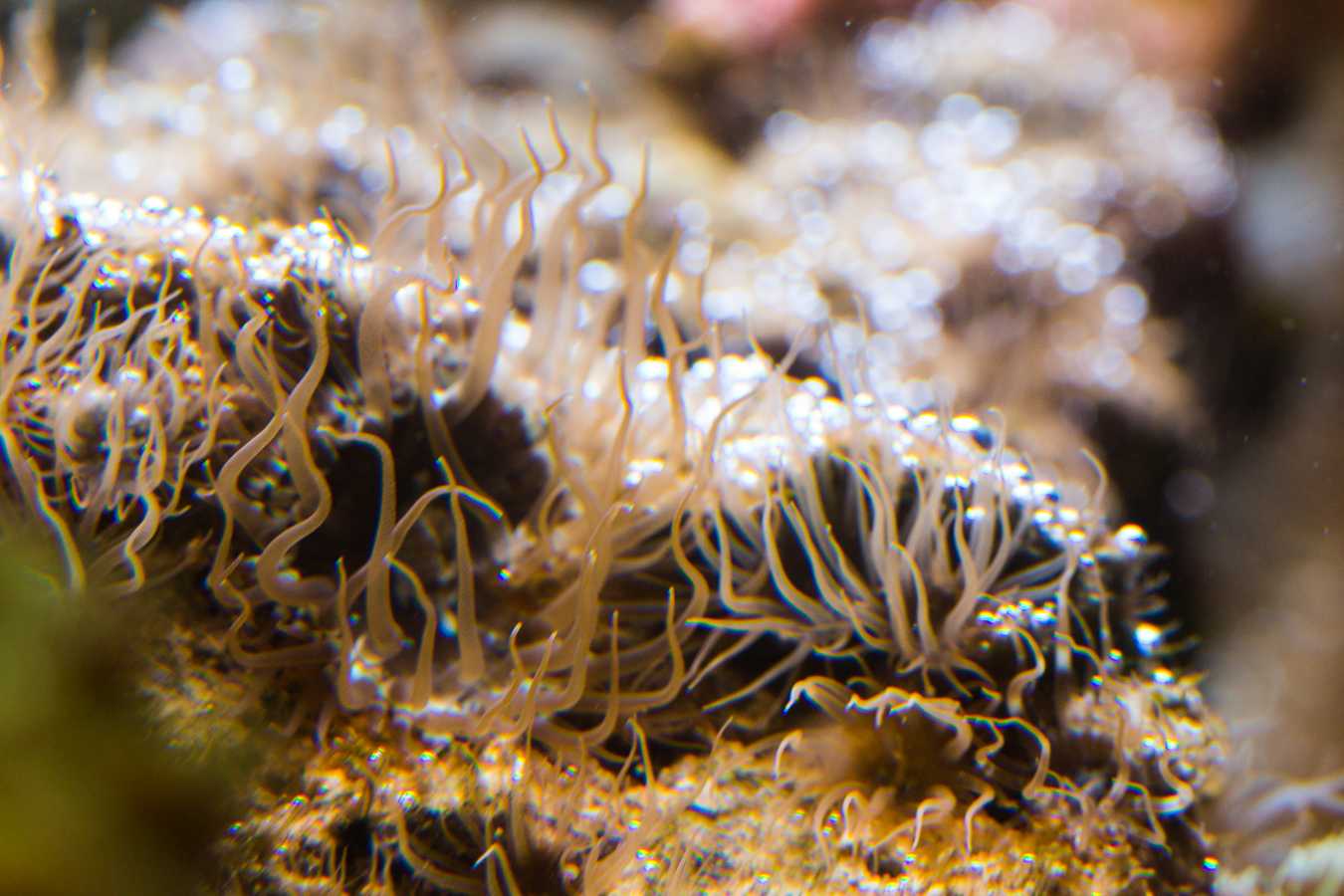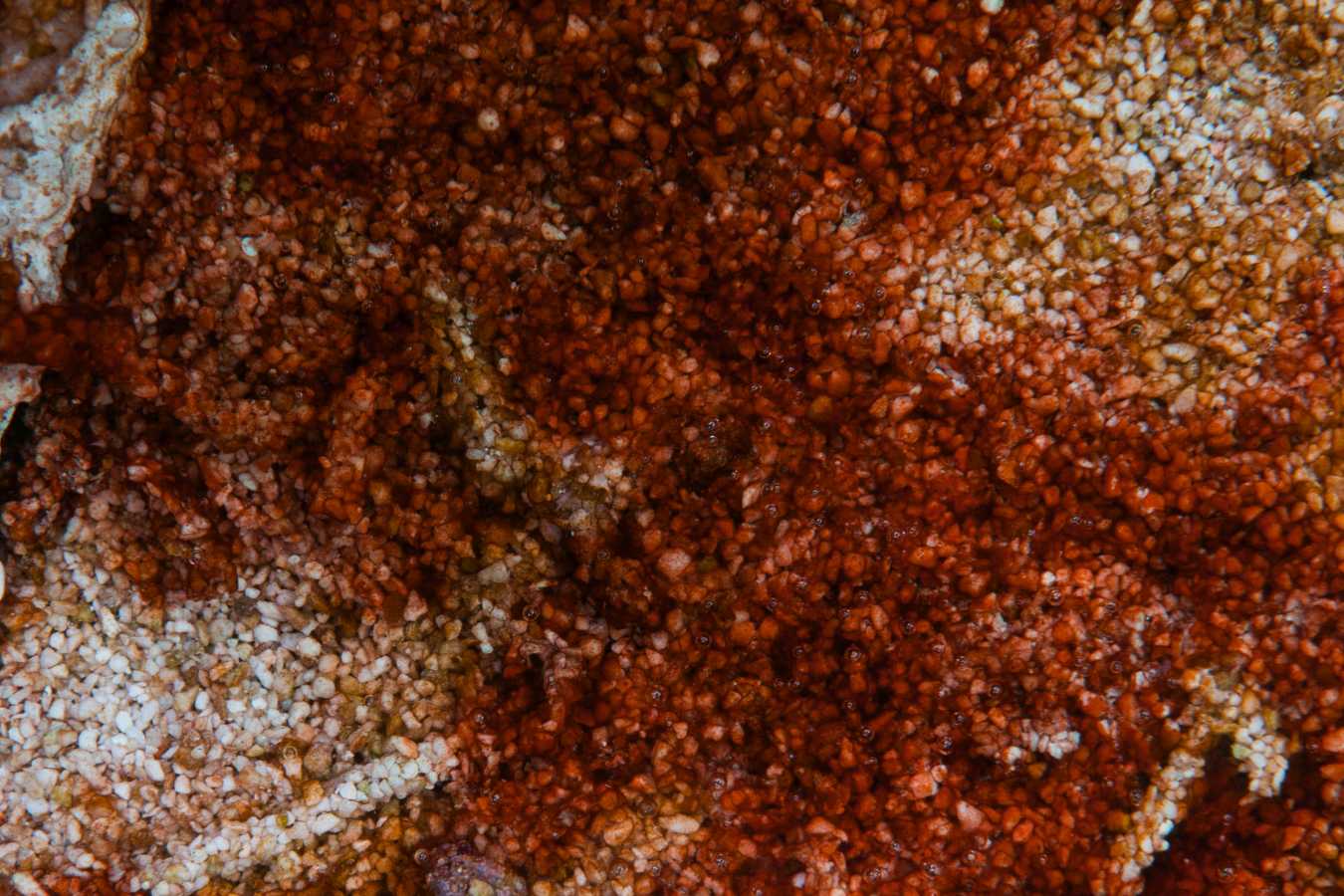Pests in the marine water aquarium: How to fight Aiptasia and Cyanobacteria?
06.03.2017 00:00

They are the nightmare of any aquarist: Pests in the seawater aquarium. They can occur in beginners' pools as well as in established aquariums and are a problem almost every aquarist has to deal with someday. It’s imporant to recognize the plague at an early stage and to act quickly so they can do as little damage as possible.
In the following we would like to introduce you two of the most common pests in seawater aquariums, Aiptasia and Cyanobacteria, and how to cope with them best.

Aiptasia
What's so dangerous about Aiptasia and how can I fight them?
Aiptasia are particulary dangerous for corals since they displace them with their strong nettle toxin. They often get into the tank through live rocks and spread very quickly why an early intervention is indispensable.
Never remove Aiptasia mechanically because spores are released then and the Aiptasia spread even more. However a chemical treatment is recommended. It‘s important to use only reef safe chemicals in the correct dose to avoid damage of your coral reef.Some manufacturers such as Tropic Marin, Red Sea, Salifert and Joes Juice offer special reef safe chemical products against Aiptasia that are injected directly into the pest and have proven to be very effective. Some aquarists rely on the chemical treatment with household remedy such as vinegar, citric acid or hot water which are also injected directly into the Aiptasia.
In addition, it is possible to use natural predators of Aiptasia in the basin - for example Peppermint shrimp (Lysmata wurdemanni) or Klein's Butterfly (Chaetodon kleinii). However there is of course no guarantee that the animals will eat the Aiptasia fast enough and to the desired extent. Thus animal helpers are often not very effective when the Aiptasia plague has already broken out but can be used preventive.

Cyanobacteria
What are Cyanobacteria and how can I cope with them?
Cyanobacteria are reddish or greenish coatings that can poison the water and are an indicator that something is wrong with the biological balance in the aquarium. The most common causes are a change of lighting, altered water parameters or outdated substrate. For this reason not only fight the Cyano plague itself but also detect the causes and remedy them accordingly (for example in case of faulty water parameters add the corresponding trace elements).
What makes the fight against Cyanobacteria so demanding is the large number of different Cyano species - because not every kind reacts to the same antidote necessarily. In any case it's important to react quickly as the bacterias grow extremely fast.What has proved as successful remedy against Cyanos for many aquarists is the mechanical removal by suction or brushing. Since the bacterias are often very persistent the process often has to be repeated regularly. If you start suction or brushing at an early stage the chances are good to get rid of the coatings permanently and prevent further spreading.
In addition there are also various chemical antidotes which should be dosed daily and promise a fast and effective control of Cyanobacteria. For example Cyano Clean of Korallenzucht or LYOX CyanoControl are popular. These chemicals can also be used preventively.
Fast action allows good success!
You see - if your aquarium is infected with pests such as Aiptasia or Cyanobacteria there is no cause for panic but it’s a serious problem. However, if you recognize the plague early enough and act immediately the changes are good to fight the plague effectively and in the long term. This requires a lot of patienc, but should be done consistently to avoid damage in your marine water aquarium.
If you have any further questions feel free to contact our Whitecorals team at any time.
Comments on this topic